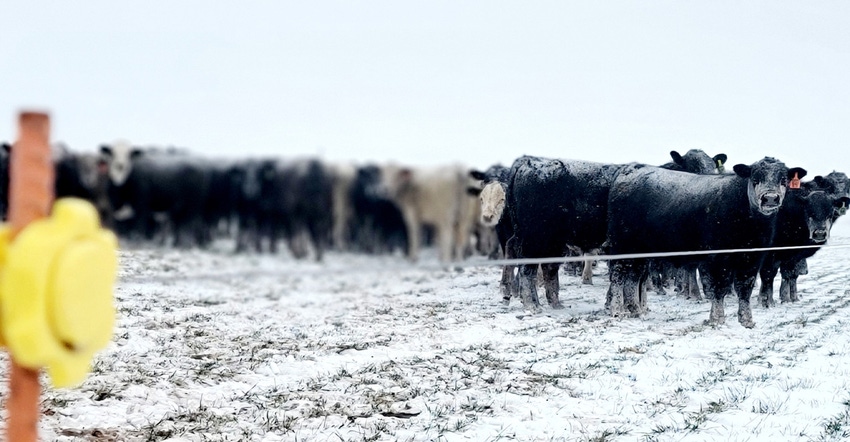
To date, 120,000 U.S. agricultural producers have received more than $4 billion in payments through the Emergency Relief Program (ERP), says USDA Farm Service Agency (FSA) Administrator Zach Ducheneaux in an interview with Farm Press.
"67% of the producers have received ERP payments, which totals a little over $4 billion of the $6 billion that we think will go out in ERP Phase One."
In late May, the USDA mailed pre-filled applications to producers with crop insurance who suffered losses due to natural disasters in 2020 and 2021. The deadline for commodity and specialty crop producers to submit the applications is July 22.
“We recognize the financial recovery need is great and worked deliberately to create a program delivery process that would ensure quick payments to producers,” said Agriculture Secretary Tom Vilsack in a recent release.
Once the pre-filled application has been submitted to the local FSA office, producers are often receiving payment in less than a week. "If we've got the direct deposit information on file, once we get the pre-filled forms back and entered into the system, you're looking at three to five business days for a direct deposit," Ducheneaux says.
See, Stutzman credits practices, God, family for high-quality peanuts
"If you think you should have received a letter but didn't or if you think it got lost in the mail, check with your county office and they can reprint the letter."
Two phases
ERP and ELRP are being implemented in two phases, with the first phase utilizing existing claim data to quickly provide relief. The second phase is focusing on ensuring producers not covered by other programs receive assistance.
For phase one, USDA used crop insurance and Noninsured Crop Disaster Assistance Program (NAP) claim data.
Both ERP and the previously announced ELRP are funded by the Extending Government Funding and Delivering Emergency Assistance Act, which President Biden signed into law in 2021. The law provided $10 billion to help agricultural producers impacted by wildfires, droughts, hurricanes, winter storms and other eligible disasters experienced during 2020 and 2021.
Within that same act, $750 million was committed to livestock producers who experienced drought or wildfire losses in 2021. Since March, eligible livestock producers have received more than $590 million in ELRP payments.
"The Emergency Livestock Relief Program was built on the framework of the data we have from the Livestock Forage Disaster Program for 2021," Ducheneaux says. "Because we're using that data, we're encouraging producers who think they may have been eligible for the Livestock Forage Disaster Program but didn't apply, to check with their county office about their eligibility to submit a late-filed application. Then we'll be able to issue both payments."
Pre-Filled Applications
Producers with eligible crop insurance claims received pre-filled applications, which included eligibility requirements and payment calculations. A separate application form was also included for each program year in which producers experienced an eligible loss.
Producers are encouraged to check with their local FSA USDA Service Center to confirm eligibility and ensure that all required farm program participation, adjusted gross income (AGI) and conservation compliance forms are on file. Those who have previously participated in FSA programs will likely have these forms on file.
ERP provisions allow for a higher payment percentage for historically underserved producers, including beginning, limited resource, socially disadvantaged and military veteran producers. To qualify for the higher payment rate, individuals must have a Form CCC-860, Socially Disadvantaged, Limited Resource, Beginning and Veteran Farmer or Rancher Certification on file.
Some producers have expressed concern about linkages to AGI and the higher payment limitations.
See, Karl Stutzman: 2022 PEA winner
"We want our producers to know that we are hearing those loud and clear," Ducheneaux says, "and we are batching up those circumstances and trying to give some examination to that. We're going to look at the data and see what the numbers look like, so we can start to understand the magnitude of the issue."
Additional assistance through Phase One
In mid-July, FSA will be sending pre-filled applications for about 9,000 eligible producers with NAP coverage.
The Federal crop insurance data used to populate ERP phase one pre-filled applications included claim data on file with USDA’s Risk Management Agency (RMA) as of May 2, 2022. At that time, claim data for the Supplemental Coverage Option (SCO), Enhanced Coverage Option (ECO), Stacked Income Protection Plan (STAX), Margin Protection Plan (MP) or Area Risk Protection Insurance (ARPI) were not complete, so crop/units including these coverage options were not included in the pre-filled ERP application form.
"By virtue of the timing of the submission of that information, insurance providers didn't have that ready when we did the first letter in early May, so they'll be receiving the same pre-populated letters throughout July, and be able to turn those into the county office so we can get them paid as well," Ducheneaux says.
More Information
ERP covers losses to a qualifying natural disaster event during 2020 and 2021 to the following:
Crops
Trees
Bushes
vines
Eligible crops include all crops for which crop insurance or NAP coverage was available, except for crops intended for grazing.
Qualifying natural disaster events include:
wildfires
hurricanes
floods
derechos
excessive heat
winter storms
freeze (including a polar vortex)
smoke exposure
excessive moisture
qualifying drought and related conditions
All producers who receive ERP phase one payments are statutorily required to purchase crop insurance or NAP coverage where crop insurance is not available for the next two available crop years.
For more information, producers are encouraged to contact their local Service Center. Other available resources include:
ERP fact sheet (PDF, 813 KB)
The second phase of both ERP and ELRP will be aimed at filling gaps and providing assistance to producers who did not participate in or receive payments through the phase one implementation.
Total payments issued to date in various U.S. regions:
Arkansas
ERP $112.5 million
ELRP $0*
California
ERP $107.0 million
ELRP $32.9 million
North Carolina
ERP $125.1 million
ELRP $0*
Texas
ERP $557.5 million
ELRP $61.2 million
*States paid $0 for ELRP did not experience qualifying drought conditions in 2021.
About the Author(s)
You May Also Like






